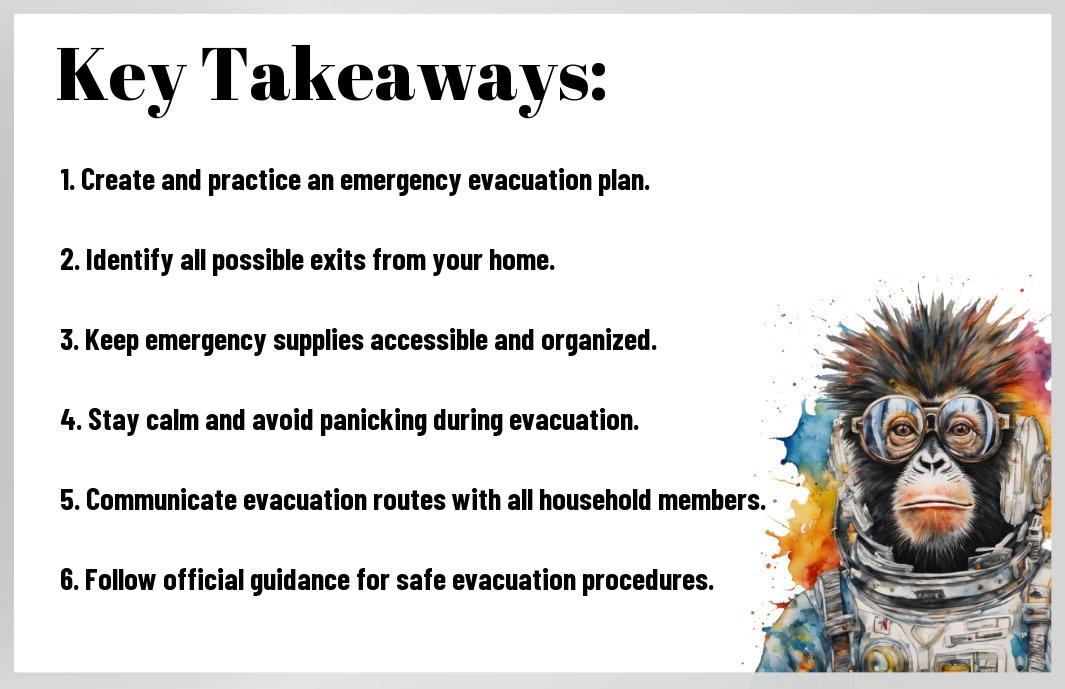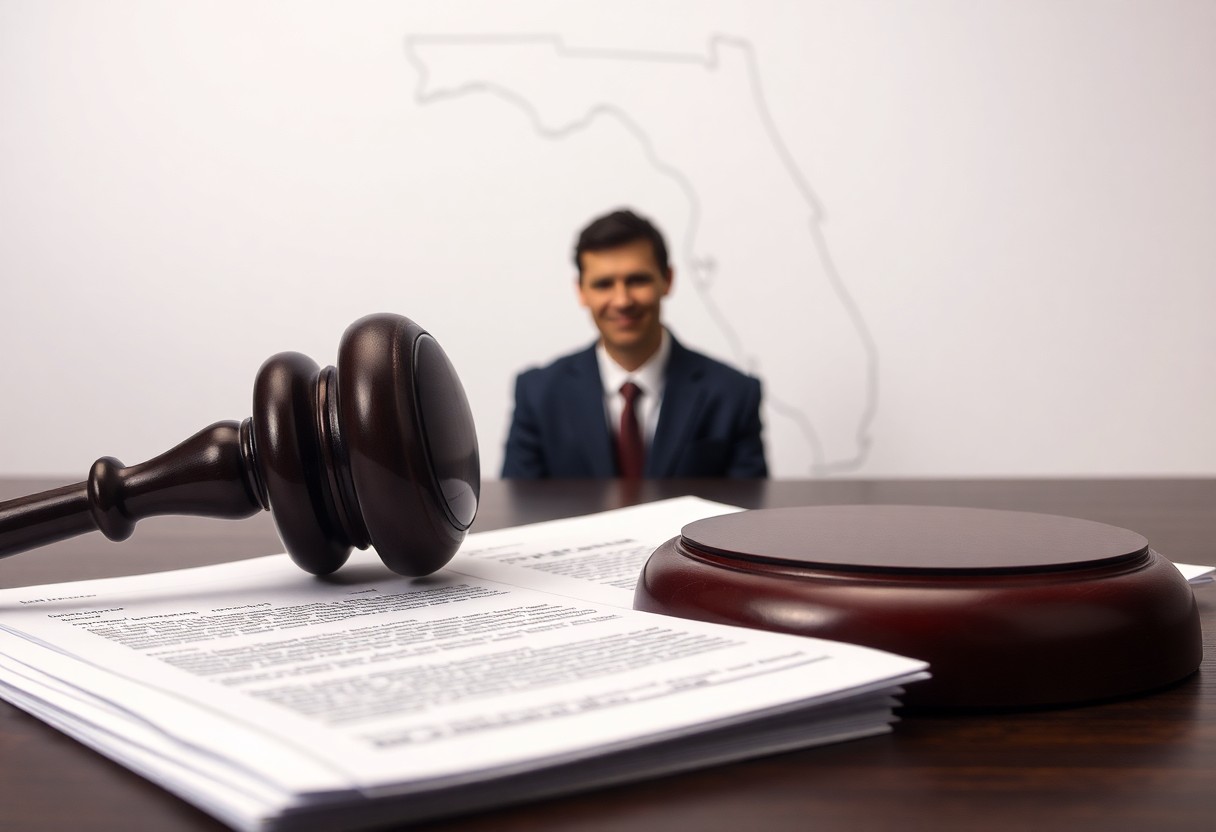With the potential for emergencies striking at any moment, it’s crucial that you know how to evacuate your home efficiently and safely. This guide will equip you with crucial strategies to navigate emergency situations, ensuring that you and your loved ones remain calm and organized. From creating a reliable evacuation plan to knowing your exits, these best practices will help you respond swiftly when every second matters. Equip yourself with the knowledge needed to protect your family and secure your home during unforeseen events.
Understanding the Evacuation Process
Before you find yourself in a situation requiring evacuation, it’s vital to understand the steps involved in the process. Having a clear plan and being familiar with the necessary procedures can help ensure the safety of you and your loved ones during emergencies. Knowing what to do and when to act will enable you to respond effectively so that you can leave your home swiftly and safely.
Importance of Planning Ahead
An evacuation plan is crucial for minimizing panic and confusion in an emergency. By creating a strategy in advance, you set a clear course of action that enables everyone in your household to know what to do and where to go. This level of preparedness not only helps in reducing stress but can also save valuable time, making your evacuation more efficient.
Familiarizing Yourself with Evacuation Routes
Yourself understanding the evacuation routes in your area is vital for a safe exit during an emergency. Knowing the quickest and safest paths away from your home can save time and prevent bottlenecks during a crisis. Study local maps, and consider multiple routes in case of obstacles, ensuring you don’t get trapped. You may also want to practice evacuation drills with your family, helping everyone feel secure and informed about what to do.
Understanding the available evacuation routes is crucial to navigating your way out of your neighborhood quickly and safely. Focus on identifying primary and alternate routes that can lead you away from potential hazards. Be mindful of the traffic patterns in your area, especially during emergencies when many others will be evacuating as well. Having this knowledge allows you to make informed decisions and utilize the safest paths, enhancing your chances of a successful and efficient evacuation.
Preparing Your Home for an Emergency
Any emergency can strike unexpectedly, so it’s crucial to ensure your home is prepared. Developing a well-thought-out plan can make all the difference when time is of the essence. Start by checking out these 7 Tips for Creating a Home Emergency Plan to guide your preparation efforts.
Identifying Safe Zones
Along with having an emergency plan, identifying safe zones in your home is pivotal. These areas should be away from windows and potential hazards, ensuring you and your family have a secure space to gather during emergencies such as tornadoes or severe storms.
Creating an Emergency Kit
Between selecting crucial items and putting them together effectively, creating an emergency kit is an important step in your preparation. This kit should include basic supplies that will help you stay safe and comfortable if you need to evacuate.
For instance, your emergency kit should contain non-perishable food, water, a flashlight, and first aid items to address basic needs during an unexpected event. Additionally, include personal items such as medications and important documents in a waterproof container. Prioritize technology devices like a battery-powered radio to stay updated on changes and alerts. Having a well-prepared emergency kit increases your ability to respond positively to unforeseen situations.
Communication Strategies
If you need to evacuate your home quickly, having robust communication strategies is vital. Establishing clear lines of communication with family members ensures everyone knows their responsibilities, where to meet, and how to stay informed about the situation. Use a combination of verbal and non-verbal signals, and establish a designated contact person outside of your immediate area to relay information.
Establishing a Family Communication Plan
Family communication plans should include important contact numbers, meeting locations, and methods to reach each other if separated. Discuss these plans regularly so everyone is familiar with the protocols. This preparedness helps reduce uncertainty during emergencies and keeps your family cohesive during a stressful situation.
Utilizing Technology for Alerts
Before an emergency arises, you should leverage technology to receive timely alerts about threats or evacuations. Sign up for local emergency notifications, utilize weather apps, and enable push notifications on your phone to get real-time updates.
Considering that emergencies can arise without warning, it’s vital to stay connected and informed. Utilize local news apps, community social media groups, and government websites for timely information. Make sure your devices are charged, and have backup power sources available. By integrating technology into your communication strategy, you enhance your ability to respond quickly and effectively, ensuring that you and your loved ones can evacuate safely.
Special Considerations for Vulnerable Populations
Keep in mind that vulnerable populations, including the elderly, disabled, and individuals with health issues, require extra attention during evacuations. Ensure you have a clear plan to assist these individuals, as they may need additional time, resources, or help navigating safely out of your home. Taking the time to prepare can significantly enhance their safety and comfort during an emergency.
Evacuating Pets
At the onset of any evacuation, don’t overlook your pets. Make sure you have a designated pet carrier, an ample supply of food, water, and any necessary medications ready to go. While evacuating, keep your pets on leashes or harnesses to prevent them from escaping in the chaos, and always prioritize their safety alongside your own.
Assisting Elderly or Disabled Individuals
Pets are wonderful companions, but evacuating elderly or disabled individuals requires special planning. Indeed, you should assess their specific needs, which might include mobility aids or medications. Ensure that accessible transportation is available and emergency contact information is at hand. It’s also beneficial to provide emotional support to ease their anxiety during this stressful time, helping them to stay calm and focused as you navigate the evacuation process together.
Practicing Your Evacuation Plan
To ensure your family’s safety during an emergency, regularly practicing your evacuation plan is imperative. These drills familiarize everyone with exit routes and assembly points, making the process smoother and less stressful if an actual evacuation occurs. Additionally, practicing helps identify any weaknesses in your plan, allowing you to make the necessary adjustments to improve your overall response during an emergency.
Conducting Regular Drills
Before an emergency strikes, conduct regular drills to keep your family well-prepared. Choose different times and scenarios to simulate various situations, ensuring everyone understands their roles. This proactive approach not only builds confidence but also reinforces the importance of staying calm and following the plan efficiently when it matters most.
Reviewing and Updating Your Plan
With changing circumstances, it’s vital to review and update your evacuation plan periodically. Your household may grow, your home layout may change, or new hazards may arise in your area, all of which could affect your evacuation strategy.
The review process should involve all family members, gathering feedback on the previous drills and identifying what worked well and what could be improved. Check for any new safety equipment you might need and ensure exit routes remain accessible. By keeping your plan current and addressing potential challenges proactively, you’ll not only enhance your family’s safety but also boost your confidence in facing emergencies effectively.
During an Evacuation
Despite the chaos that can arise during an evacuation, it’s vital to stay calm and focused. Quickly gather your emergency kit, important documents, and imperative belongings while ensuring that everyone in your household is accounted for. As you leave your home, use caution, stay aware of your surroundings, and prioritize safety above all else. Your well-being is paramount, so follow your evacuation plan and remain alert for any potential hazards along your route.
Staying Informed
At all times during an evacuation, ensure you have access to reliable sources of information, such as local news broadcasts, emergency alerts, and updates from local authorities. Keeping yourself updated will help you make informed decisions about your safety and the best routes to take while evacuating.
Following Official Instructions
After verifying your personal safety and the safety of your family, focus on following any official instructions provided by emergency services. These directives are designed to protect you and guide you to safety. Pay close attention to evacuation routes and advisories for areas to avoid, as these locations may be hazardous or compromised.
With the unpredictability of emergencies, adhering to official instructions is vital for your safety and that of others. Local authorities often provide timely updates regarding road closures, shelter locations, and potential hazards. By trusting these directives, you can navigate to safety more efficiently and contribute to the overall safety of the community. Stay tuned to official communication channels to ensure the best outcomes during an evacuation.

Summing up
Upon reflecting, it is vital for you to prioritize your safety and that of your family when evacuating your home. By creating a clear evacuation plan, ensuring all members know the emergency protocols, and regularly practicing drills, you can navigate an emergency situation more effectively. Make certain that you have a designated meeting point and maintain an emergency kit with necessary supplies. Your preparedness can significantly impact the outcome during unexpected events, allowing you to respond swiftly and with confidence.











